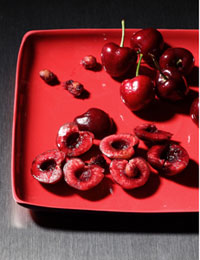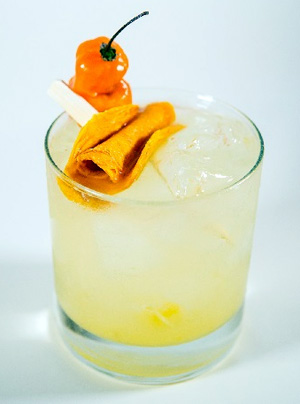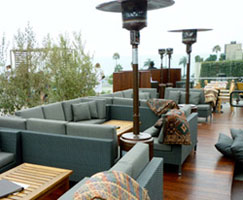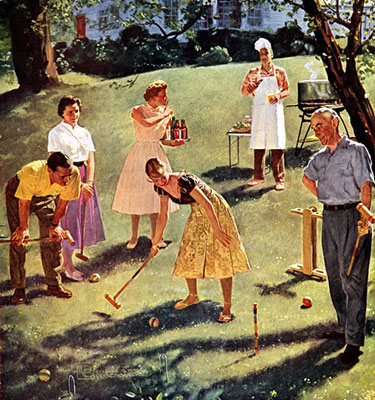 The email was very cryptic: “The Blindfold Dinner, April 24, 2012, at Osteria Mamma”. There wasn’t even a time, let alone an explanation. But still, how could we resist? After all, Osteria Mamma is our favorite Italian restaurant and the email is from Filippo, one of Mamma’s two sons who I became friends with first while taking an Italian Wine Specialist course and then from endless dinners at their restaurant. I hit the “reply” key on the email and write “Peggy and I will be there. What time?”
The email was very cryptic: “The Blindfold Dinner, April 24, 2012, at Osteria Mamma”. There wasn’t even a time, let alone an explanation. But still, how could we resist? After all, Osteria Mamma is our favorite Italian restaurant and the email is from Filippo, one of Mamma’s two sons who I became friends with first while taking an Italian Wine Specialist course and then from endless dinners at their restaurant. I hit the “reply” key on the email and write “Peggy and I will be there. What time?”
As the dinner approaches, we start to wonder exactly what will happen. The questions we keep coming back to are: (i) will it just feel silly to be blindfolded while sitting in the middle of a restaurant? (ii) will the blindfold really affect the flavor of food and our experience of it?, and most importantly, (iii) how do we avoid spilling our wine all over the people next to us? We find out that this is to be Osteria Mamma’s second Blindfold Dinner, so Peggy looks up the first on the internet and discovers that after a course is served and been experienced blindfolded, you can finish the dish with your sense of sight. (That’s when we decide to just not drink anything until we can see so our fellow dinners will all be safe.)
We get to the restaurant and are led to the back room that has a long table set for about fifteen guests. In addition to Filippo, our other host for the night is Giammario Villa, a wine educator who was one of the teachers at my wine class. Giammario is also an Italian wine importer and he is pairing the wine for the night. (At this point Peggy and I quickly reconsider and decide Giammario’s wines will be more than worth any possible risk to the clothes of those sitting next to us.)

 There are three types of people in this world: those that like cherries, those that like cherry-flavored, and those that like neither (or both, which makes this category 4 I suppose). I’m wedged into the latter but have slowly learned to appreciate the seasonal gift of fresh cherries.
There are three types of people in this world: those that like cherries, those that like cherry-flavored, and those that like neither (or both, which makes this category 4 I suppose). I’m wedged into the latter but have slowly learned to appreciate the seasonal gift of fresh cherries. As a margarita fanatic (dare I say connoisseur?), I feel like I have a certain responsibility to find the best margaritas wherever I go—dive bars, hotels, even the Greek Theatre (theirs is surprisingly worth $18, by the way). There’s only one rule: they need to be crafted with fresh juice and premium tequila. No artificial sour mix that looks like antifreeze or tequila that comes in a plastic bottle!
As a margarita fanatic (dare I say connoisseur?), I feel like I have a certain responsibility to find the best margaritas wherever I go—dive bars, hotels, even the Greek Theatre (theirs is surprisingly worth $18, by the way). There’s only one rule: they need to be crafted with fresh juice and premium tequila. No artificial sour mix that looks like antifreeze or tequila that comes in a plastic bottle! Los Angeles is a very large and fractured city. Most people, myself included, tend to play where they live because commuting is such an
unknown quantity. Sure you get used to leaving yourself plenty of time
to get where you're going, if you have to be on time or actually respect
the people you're meeting. SigAlert.com is practically your best
friend. So, even though I love a good wine bar, the opening of Sonoma
Wine Garden late last summer escaped my attention. I can hardly be
blamed for not knowing. It's in Santa Monica and I live in the San
Fernando Valley two diametrically opposed areas. When I got an
invitation via Twitter to attend a tasting put on by Vibrant Rioja (more
about them later) at the aforementioned SWG, I was excited and
intrigued. A new wine bar, how cool. Then I became slightly concerned. A
new wine bar in the Santa Monica Place Mall?
Los Angeles is a very large and fractured city. Most people, myself included, tend to play where they live because commuting is such an
unknown quantity. Sure you get used to leaving yourself plenty of time
to get where you're going, if you have to be on time or actually respect
the people you're meeting. SigAlert.com is practically your best
friend. So, even though I love a good wine bar, the opening of Sonoma
Wine Garden late last summer escaped my attention. I can hardly be
blamed for not knowing. It's in Santa Monica and I live in the San
Fernando Valley two diametrically opposed areas. When I got an
invitation via Twitter to attend a tasting put on by Vibrant Rioja (more
about them later) at the aforementioned SWG, I was excited and
intrigued. A new wine bar, how cool. Then I became slightly concerned. A
new wine bar in the Santa Monica Place Mall?  The more wines you try, the more you'll develop your palate-it's that simple. And how you try them makes all the difference. I know when you see wine tasters doing a lot of curious slurping it seems like a highly mysterious activity...but it's not. Swirl, sniff and spit, that's all it is. So why do we swirl? What are we looking for exactly? What is acidity? Tannin?
The more wines you try, the more you'll develop your palate-it's that simple. And how you try them makes all the difference. I know when you see wine tasters doing a lot of curious slurping it seems like a highly mysterious activity...but it's not. Swirl, sniff and spit, that's all it is. So why do we swirl? What are we looking for exactly? What is acidity? Tannin?
